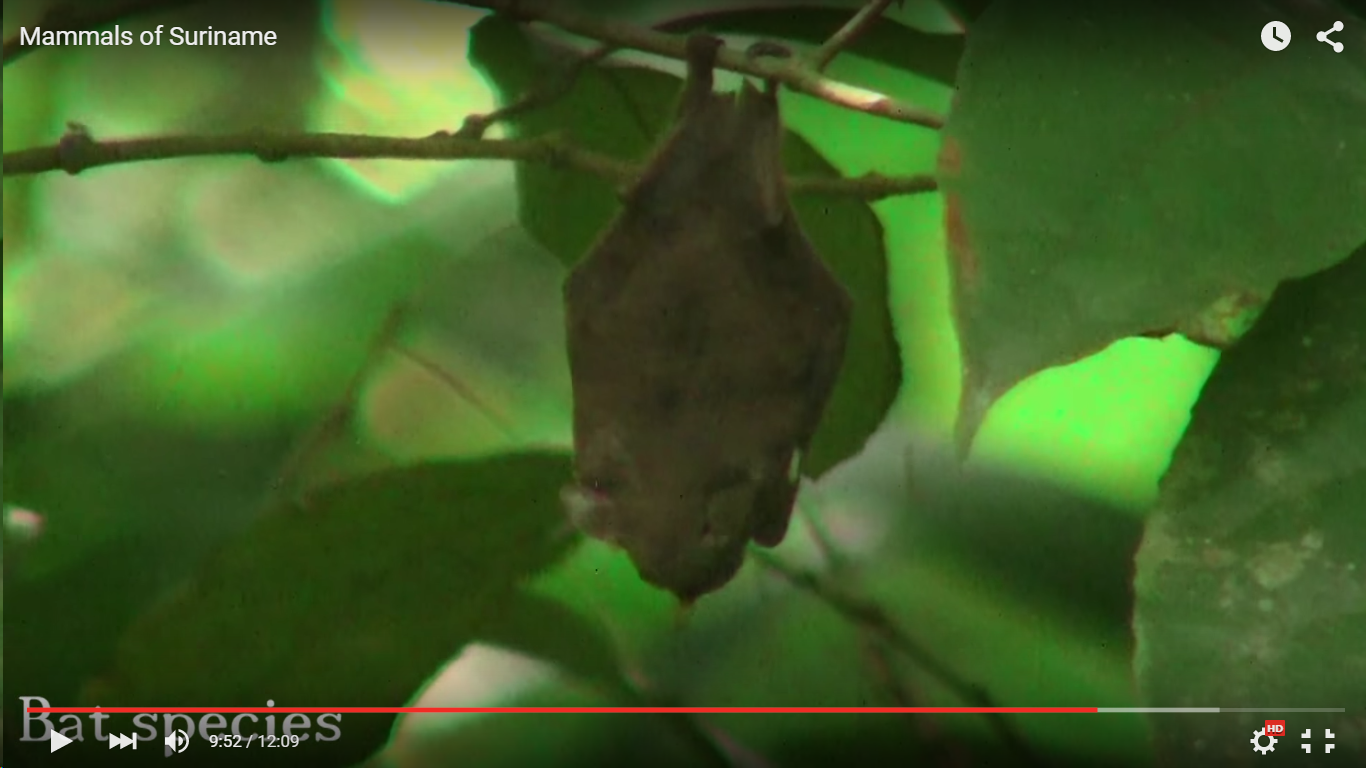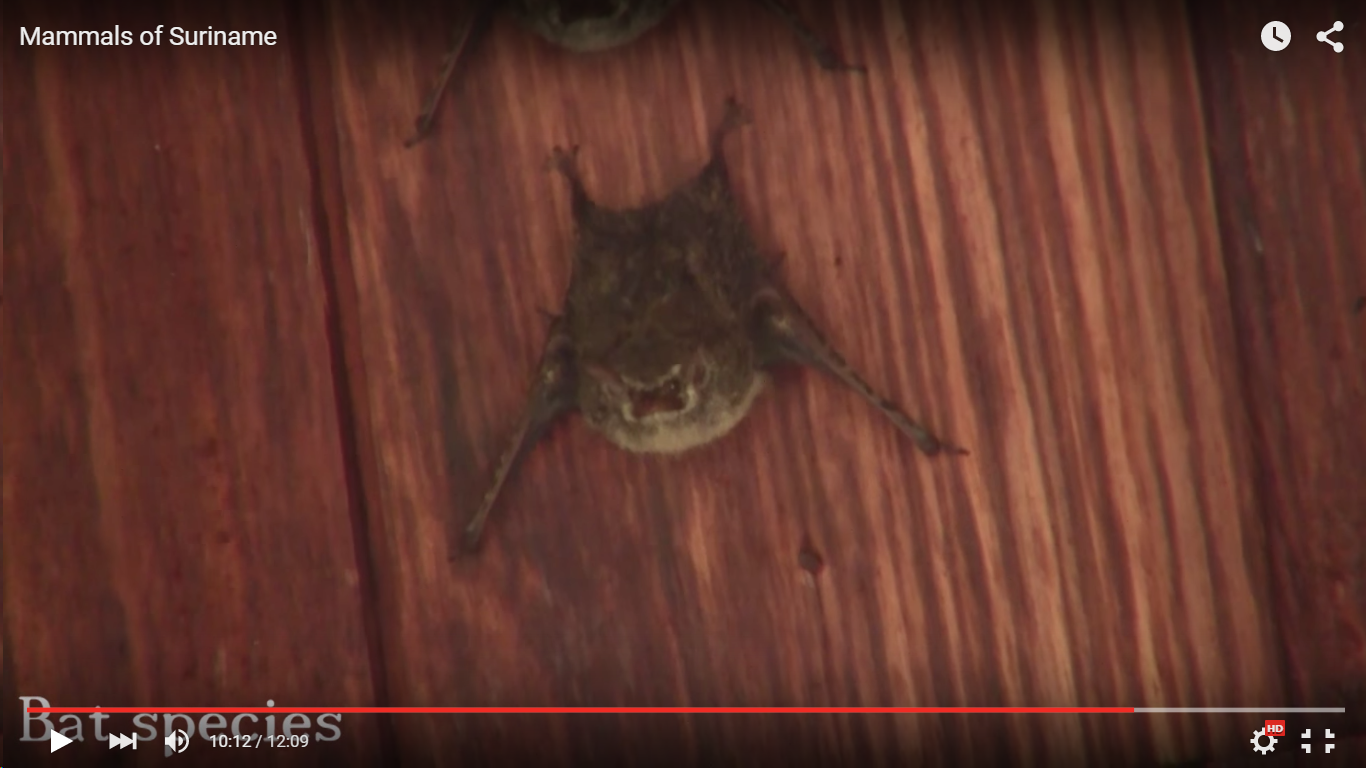Help wanted for two Surinamese bats!
Hi folks,
I really hope someone with knowledge about the bats of the Guianan Shield can help me solve these bat species out for me! The first one was filmed in a wet forest near the border with Guyana, the second one was filmed while hanging from a roof on Fungu Island (river island) in Ralleigh Falls/Voltzberg National Park (primary rainforest).
Hope you can help me out 🙂
Best regards,
Pieter de Groot Boersma
11 Comments
-
-
Jean-Michel BOMPAR
With no doubt, the second is Rhynchonycteris naso with the typical white rectangle surrounding the face and the forarm barred with yellow-bronwn tuffs of hairs. Is it possible to have more views or a short video of the firts one ? Thanks. Jean-Michel Bompar
-
-
Jean-Michel BOMPAR
Sorry Pieter. For different studies I’ve caught thousands of bats in this region but I’m unable to identify this one.
-
vdinets
Well, the first one is clearly a leaf-nosed bat of Stenodermatini tribe. Going through the list of possible species and rejecting those that are too small, have different color, white markings, broad noseleaf, or different type of roosts, I think the most likely candidate is Chiroderma villosum.
-
Fiona Reid
I agree w Vladimir it is definitely a Stenodermatine. However think it is Ametrida centurio. They roost in foliage and are a pale sandy brown color. Also it has a shortish, furred uropatagium, as expected I think the white patch on right is part of the white shoulder patch. It looks to have a short face but the angle is a bit difficult to tell. Chiroderma villosum is normally gray rather than sandy brown and doesn’t have any white patches. It also has a longer uropatagium.
Leave a Reply
You must be logged in to post a comment.




Andrew Block
Don’t know the first but the second looks a lot like a Proboscis Bat (Rhynchonycteris naso).